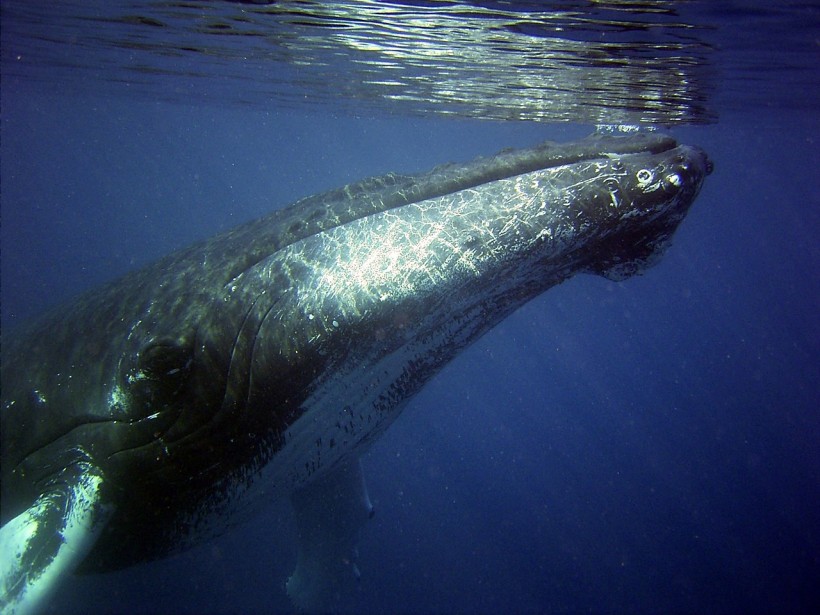Recent findings indicate increased interspecies mating between North Atlantic blue whales and fin whales, unveiling higher-than-expected hybrid DNA levels and enhanced reproductive viability.

Blue Whales in the North Atlantic Found to Regularly Engage in Interspecies Mating with Fin Whales, Genome Sequencing Reveals
Interspecies Breeding and Unexpected Fin Whale DNA in North Atlantic Population
Blue whales, recognized as the largest animals globally, have experienced a significant decline in their population due to extensive whaling, resulting in their current endangered status. The study on North Atlantic blue whales has brought to light an unexpected revelation-high levels of fin whale DNA, indicating a substantial degree of interspecies breeding.
Published in Conservation Genetics, the recent genetic analysis focused on identifying signs of inbreeding within the endangered B. musculus musculus subspecies. The researchers embarked on the meticulous task of constructing a "de novo" genome, essentially assembling it from scratch by combining DNA fragments from different individuals.
Despite the complexity of this process, study co-author Mark Engstrom likened it to solving a challenging puzzle without a reference picture, emphasizing its laborious yet insightful nature.
The outcomes of this genetic exploration disclosed that each sampled blue whale carried approximately 3.5% of fin whale DNA. This surprising level of hybridization challenges previous assumptions regarding the infertility of these hybrids.
It was previously believed, akin to most hybrid animals, that blue and fin whale hybrids were unable to reproduce. However, a 2018 study contradicted this notion, revealing that at least some of these hybrids could successfully produce offspring with blue whales.
The unexpected prevalence of fin whale DNA highlights the intricacies of interspecies interactions and challenges existing assumptions about the reproductive capabilities of hybrid whales.
This genetic revelation prompts a reevaluation of our understanding of blue whale populations and emphasizes the importance of continued research to inform effective conservation strategies. The study contributes valuable insights into the dynamics of interspecies breeding among whales, showcasing the resilience and adaptability of these marine giants in the face of environmental challenges.
READ ALSO: Brazil's Enigmatic Dogxim: First-of-Its-Kind Canine Hybrid Between a Fox and a Dog Found in the Streets of Vacaria
Hybrid Whales and Unidirectional Genetic Exchange
In 1986, Icelandic waters witnessed the first documented instance of a fertile cetacean hybrid, as a pregnant fin/blue whale hybrid carrying a fetus fathered by a blue whale was discovered. This event illuminated the introduction of fin whale DNA into the blue whale population.
The genetic exchange known as introgression between these species is intriguingly unidirectional. Research indicates that while blue whales show a significant presence of fin whale DNA, there is no corresponding reciprocity in the exchange from fin whales.
This observation suggests that blue whales may be the primary participants in mating with hybrids, potentially due to the more substantial fin whale population and limited options for blue whales in the region.
The Northern Atlantic, where this study was conducted, has been a challenging environment for the blue whale population due to historical threats from human hunting technology, leading to a decline in numbers and a slow recovery. While interspecies breeding can contribute to genetic diversity, concerns arise about the potential loss of distinctiveness and adaptability in the face of environmental changes, particularly amid human-induced climate change.
RELATED ARTICLE: Climate Change Could Result in Numerous Hybrid Species in the Arctic; Here Are Some of Them
Check out more news and information on Hybrid Species in Science Times.



![Earth's Quasi-Moon Kamo‘oalewa Could Originate From Lunar Surface Not Asteroid Belt [Study]](https://1721181113.rsc.cdn77.org/data/thumbs/full/53275/89/56/50/40/earths-quasi-moon-kamo-oalewa-could-originate-from-lunar-surface-not-asteroid-belt-study.png)










